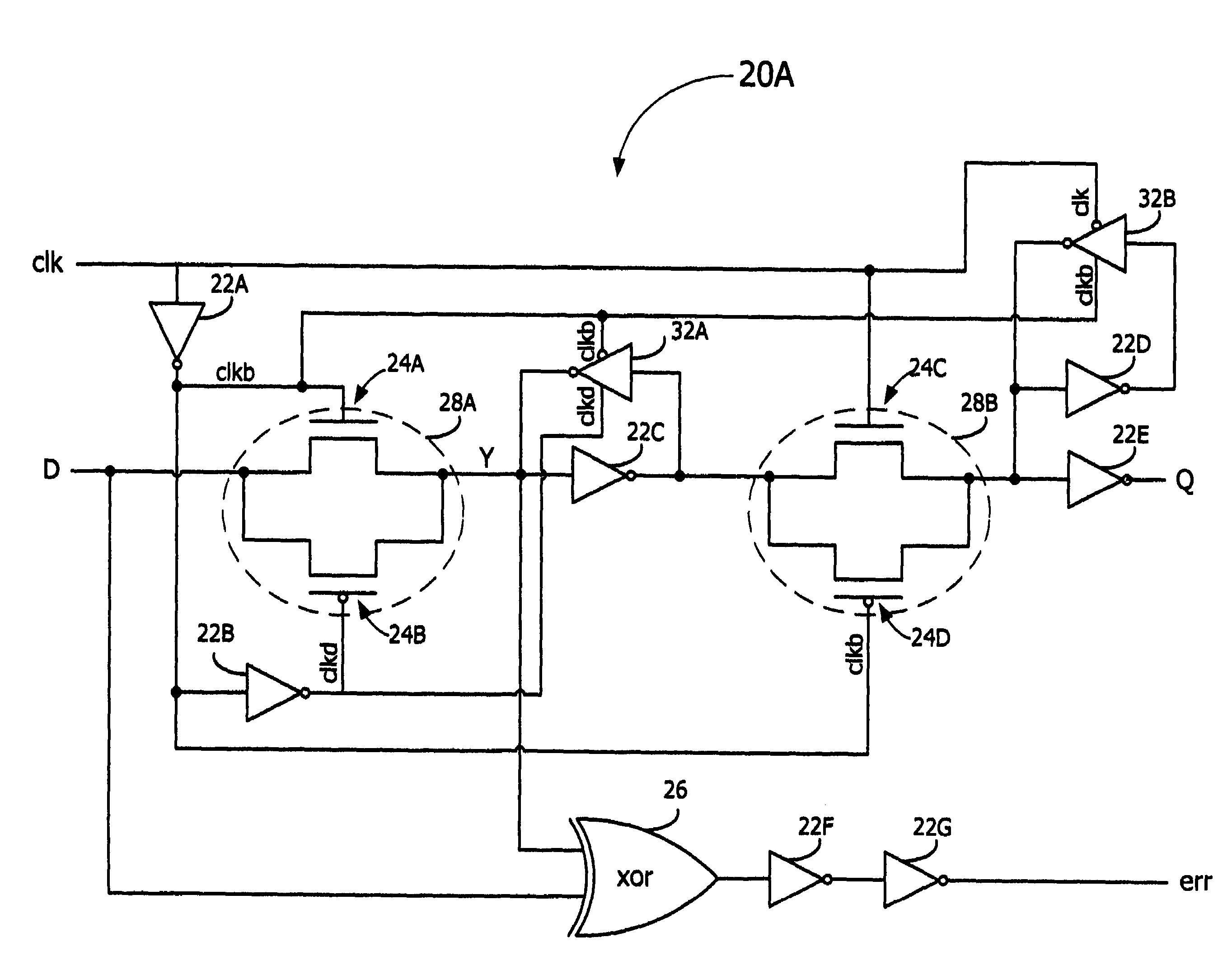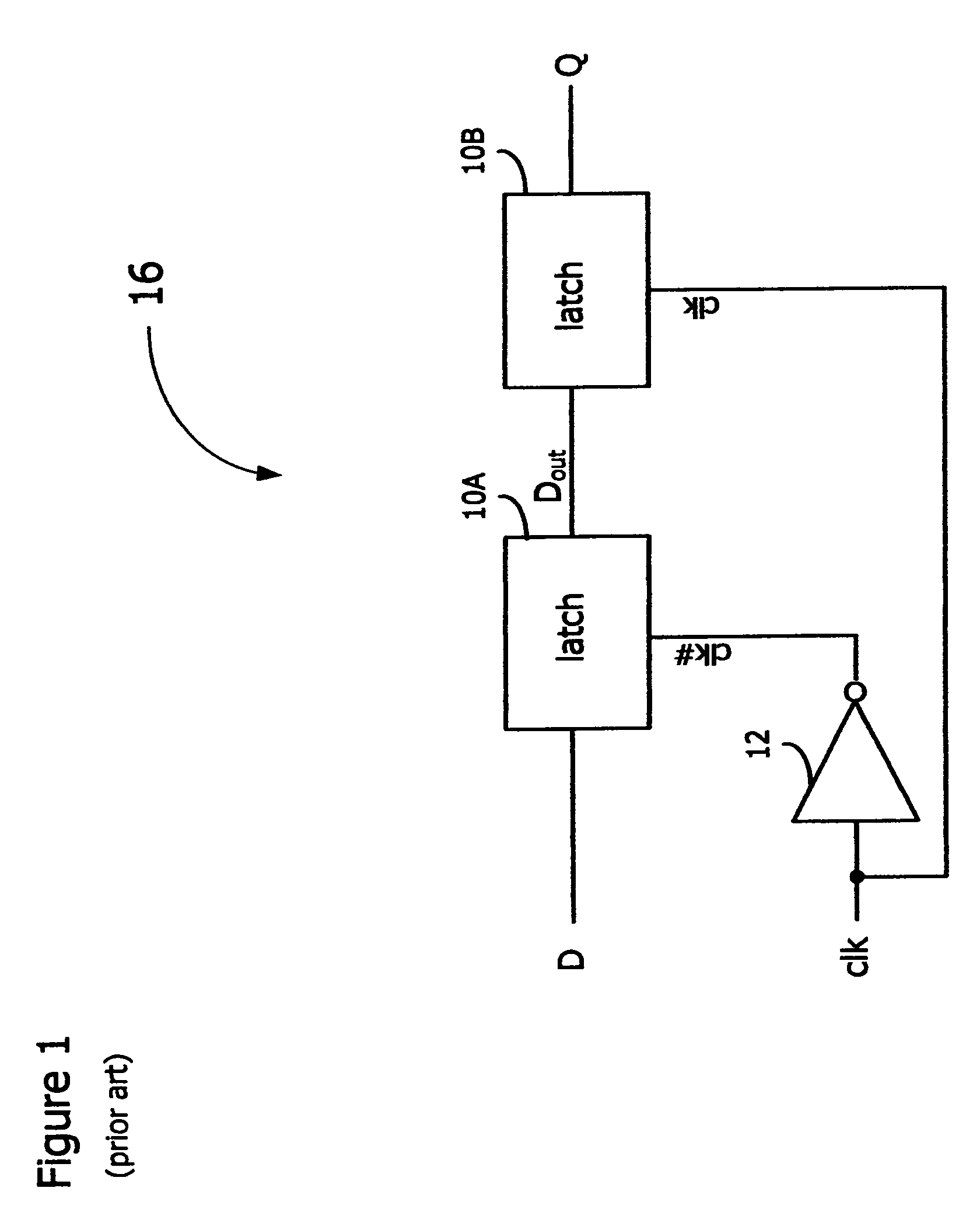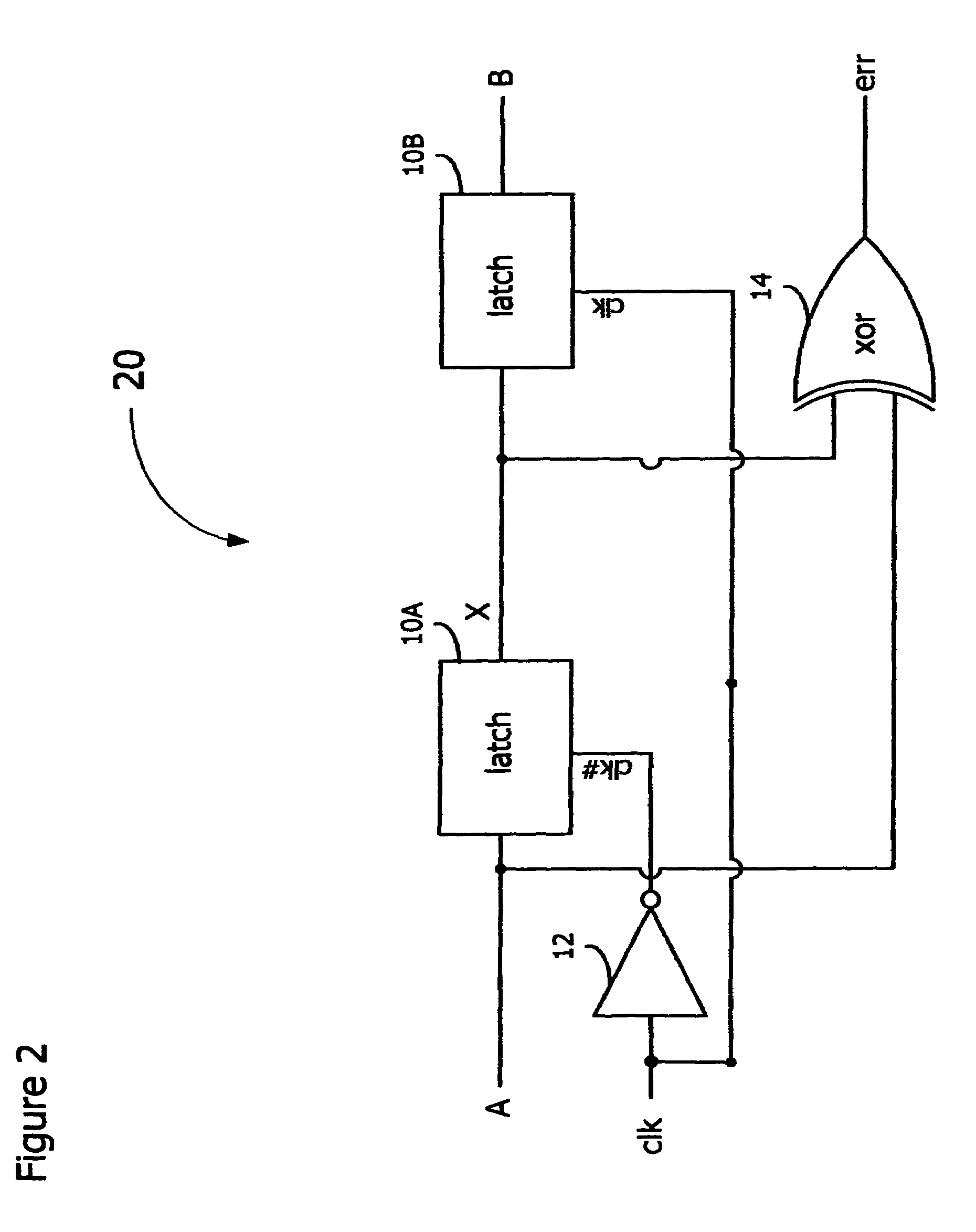Error-detection flip-flop
a digital circuit and error detection technology, applied in error detection/correction, instruments, computing, etc., can solve problems such as delay in digital circuit change, inability to predict and account for circuit design, and inability to detect errors
- Summary
- Abstract
- Description
- Claims
- Application Information
AI Technical Summary
Problems solved by technology
Method used
Image
Examples
Embodiment Construction
[0020]In accordance with the embodiments described herein, an error-detection flip-flop is disclosed for identifying timing errors in digital circuits. The error-detection flip-flop is a master-slave flip-flop including logic to determine whether an input signal is received during a predetermined portion of a clock period, signifying a timing error. The error-detection flip-flop produces a variable-length error pulse, which may be combined with other error pulses and converted to a stable signal for sampling by error-correction circuitry. Error-detection flip-flops may replace master-slave flip-flops in a digital circuit and yet do not increase the clocking power of the digital circuit and consume little additional circuit area.
[0021]In the following detailed description, reference is made to the accompanying drawings, which show by way of illustration specific embodiments in which the subject matter described herein may be practiced. However, it is to be understood that other embod...
PUM
 Login to View More
Login to View More Abstract
Description
Claims
Application Information
 Login to View More
Login to View More - R&D
- Intellectual Property
- Life Sciences
- Materials
- Tech Scout
- Unparalleled Data Quality
- Higher Quality Content
- 60% Fewer Hallucinations
Browse by: Latest US Patents, China's latest patents, Technical Efficacy Thesaurus, Application Domain, Technology Topic, Popular Technical Reports.
© 2025 PatSnap. All rights reserved.Legal|Privacy policy|Modern Slavery Act Transparency Statement|Sitemap|About US| Contact US: help@patsnap.com



